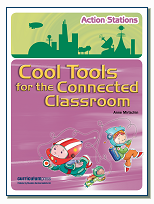This tweet sparked a conversation on twitter with many teachers offering advice. Before answering the question, further questions were asked:-
- was the staff member housebound and able
- what software would be best to use and which is easiest
- sound could be tricky so need a microphone. Question on what sort of microphone and how to set up
- what physical space was being used and how many f2f participants
- what does the program look like – presentations, workshops, group work etc?
Valuable advice from Brette Lockyer
As one of my passions is using technology to break down all barriers. From my experience, my response would be as follows:-
Potential tools to be used:
Software options available to Victorian School Teachers:- Skype, Blackboard Collaborate (through DEECD license), MS Lync, Google Hangouts or Polycom videoconferencing equipment. The easiest tool to use would be Skype as it extremely user friendly but may be blocked in some schools. It would allow chat, video and audio options plus some more difficult features such as screen sharing etc. Recording sessions is more difficult and bandwidth may be an issue. A mobile device can be used for access from home.

Using skype
MS Lync is available to Victorian teachers but the software would need to be installed and activated on devices. If it is a two way link, it is user friendly and has many advanced features, including chat, whiteboard and the ability to send large files. It can easily be recorded and presents itself as wmv file once finished which can be shared privately or online. All participants could log in and the chat area could be used as a valuable backchannel, giving everyone a voice. Multi participants would take more time to create email invitations.

MS Lync whiteboard
Blackboard Collaborate is still one of my favourite tools for bringing in virtual participants to events. It has many advanced features, including that valuable backchannel, an interactive whiteboard, the ability to create breakout rooms for group work and can be recorded easily. One link or booking could run all day or different links created for different sessions logins. The housebound teacher would need to have trialled it first to make sure it all works from home, especially if on a Mac. There is a mobile app which does not allow participants full interactivity eg cannot write on the whiteboard, but can chat, view and talk. At least one staff member will need moderator rights in order to book a room(s).

Interactive whiteboard in Blackboard Collaborate
Google Hangouts Offers many of the above features and is very google based. Sessions can be recorded and uploaded simultaneously to youtube. However only 10 video participants can be involved and it is very bandwidth heavy. If multi participants, takes time to learn how to set up the hangout and share out the link. It would be preferable to provide a different hangout link for each session.

Google hangouts used for PD
Polycom Videoconferencing Equipment All rural secondary schools and smaller rural primary schools have access to Polycom equipment. The housebound teacher would need to log in with a mobile device and the video will not be as clear. A separate back channel would need to be created eg with todaysmeet.

Polycom used for PD to several schools
Brette Lockyers suggestion was such valuable advice as the one of the biggest challenges is to make virtual participants feel part of the professional development.
Other considerations
Requirements:
Equipment: microphone, web camera, ideal location for the recording devices to capture sound, video etc and above all – determination to make it work! Preferably an on-site buddy and a back channel separate to the chosen tool.
The simplest and easiest to use option would be for “an (confident) on-site buddy” to use skype on their laptop or mobile device, sit up the front, directly in line with the presenter and videoconference presentations. The housebound staff member would be taken with them to be part of their smaller group discussions. It takes pressure off the organisers and presenters to be using the formal equipment and worry about sound, microphones etc. The buddy’s device would need a built in webcam and microphone. However external ones could also be used. Alternatively any of the above tools could be used by the buddies. The buddy would need to watch the txt chat for any messages from the virtual participant.
If there is no buddy, careful consideration would need to be given to position of webcam and microphone. The webcam will need to capture the presenter, and/or the presentation and will need to be adjusted each time unless using Lync, Blackboard Collaborate or Hangouts.
If the whole staff are to participate in the virtual link up simultaneously, then blackboard collaborate and MS Lync would be the tools of choice. Physical participants will need to turn down their speakers and listen to the actual voice rather than the virtual. They can be active in the chat or on an interactive whiteboard should the occasion present. Other external participants could be invited in to create an even richer environment.
Complementary Tools
A backchannel in todaysmeet could bring in all participants if they have their own device allowing questions, shared resources, information sharing and a space for follow up conversations.
A backchannel should also be agreed upon and tested with the housebound staff member so that they can communicate should the normal channels not work in making connection- could be any of the above tools that they are familiar with.
The buddy
Needs to be comfortable with using technology, networking and a person who can work well, actively, interactively and collaboratively with the housebound staff member.
Recording of the Event
In the event of misfortune, the event/sessions should at least be recorded so that it can be viewed again and again!
What have I missed? What would you suggest? There are many many tools out there now for web conferencing but these are my favourite ones! It is learning in progress and using technology effectively to ensure that no-one is restricted from learning!































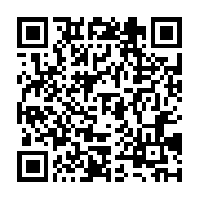






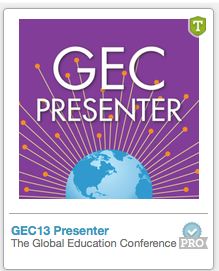


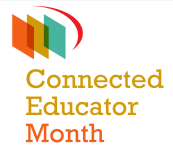
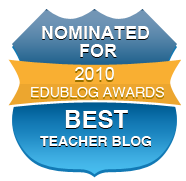




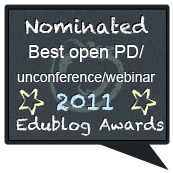
 Twitter/murcha
Twitter/murcha Del.icio.us/murcho
Del.icio.us/murcho GMail/Anne M
GMail/Anne M Blog/Anne M
Blog/Anne M